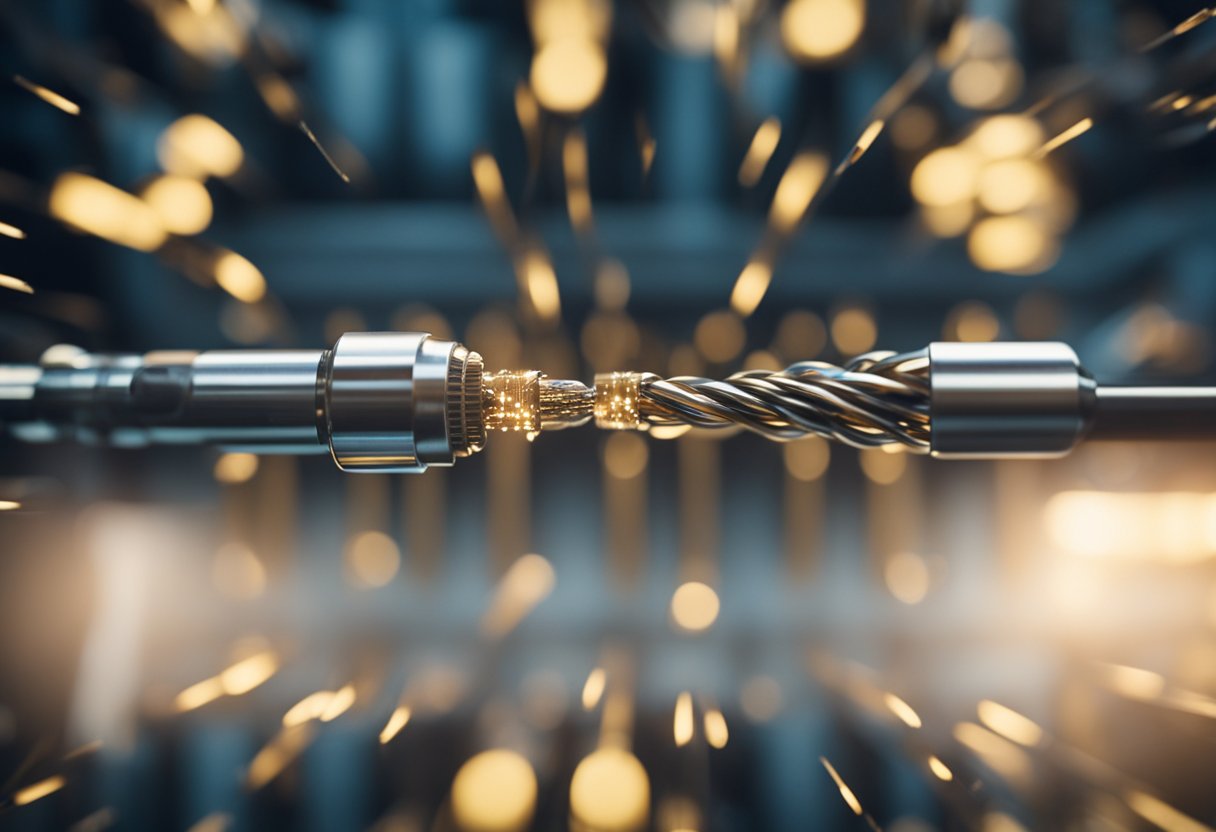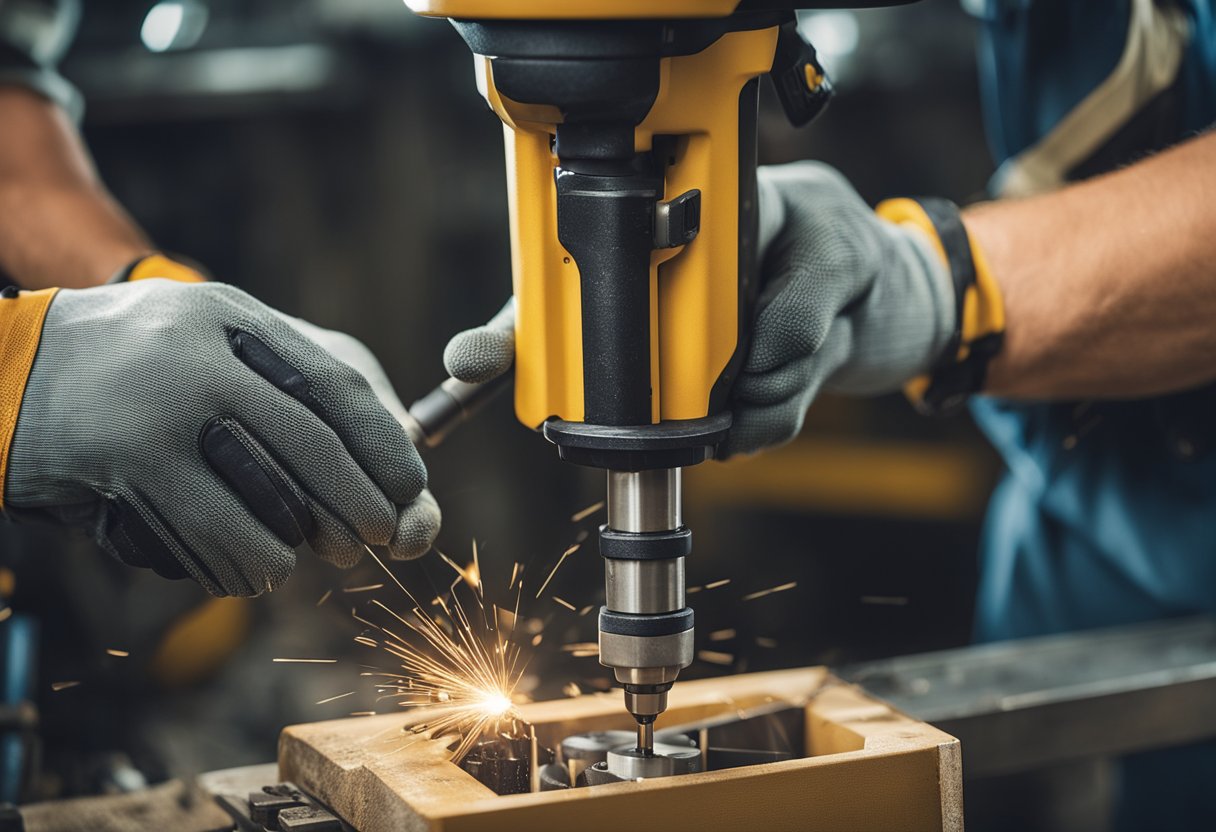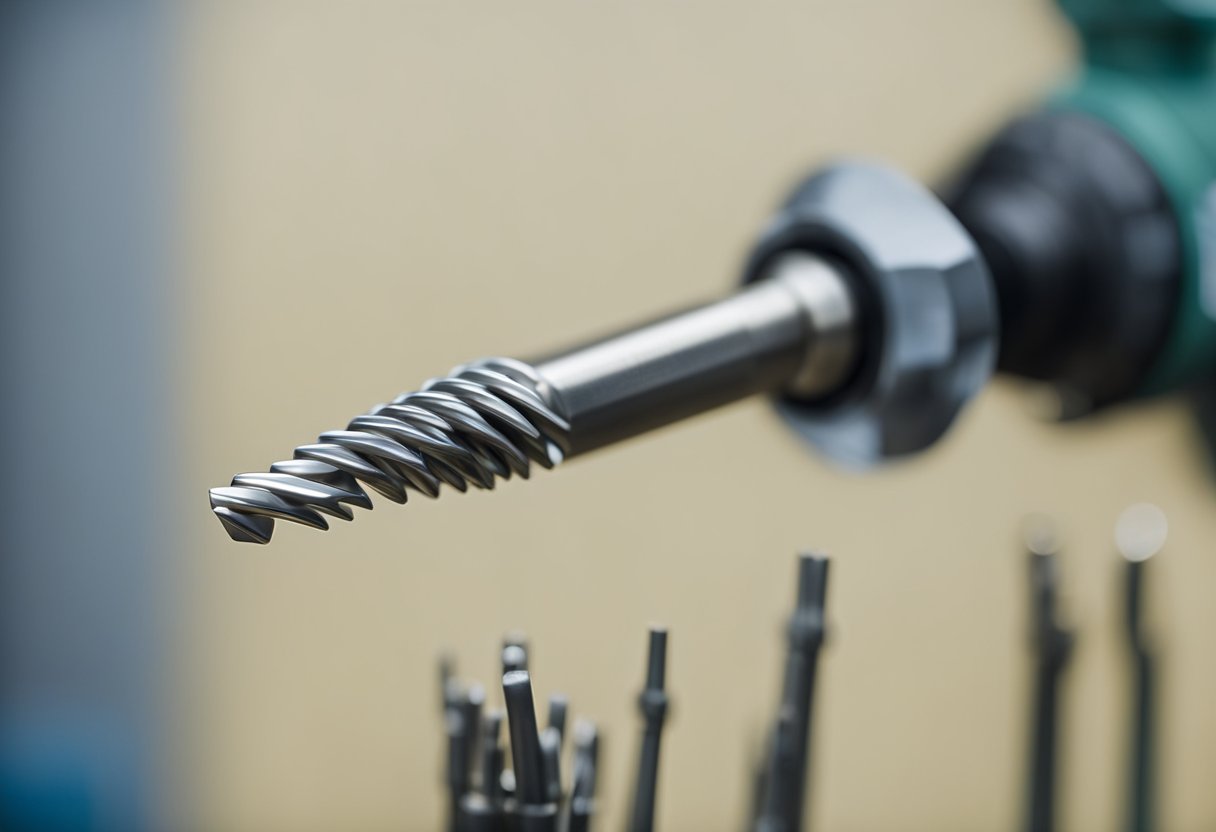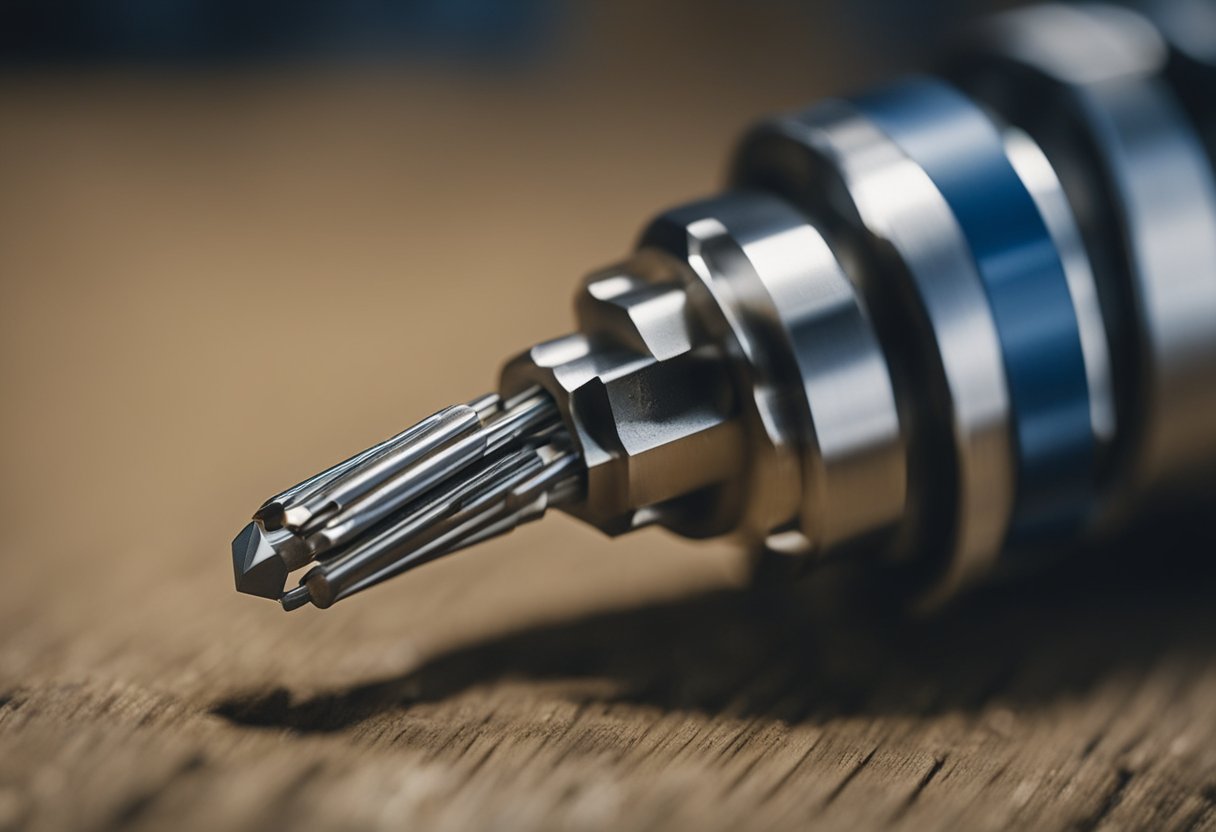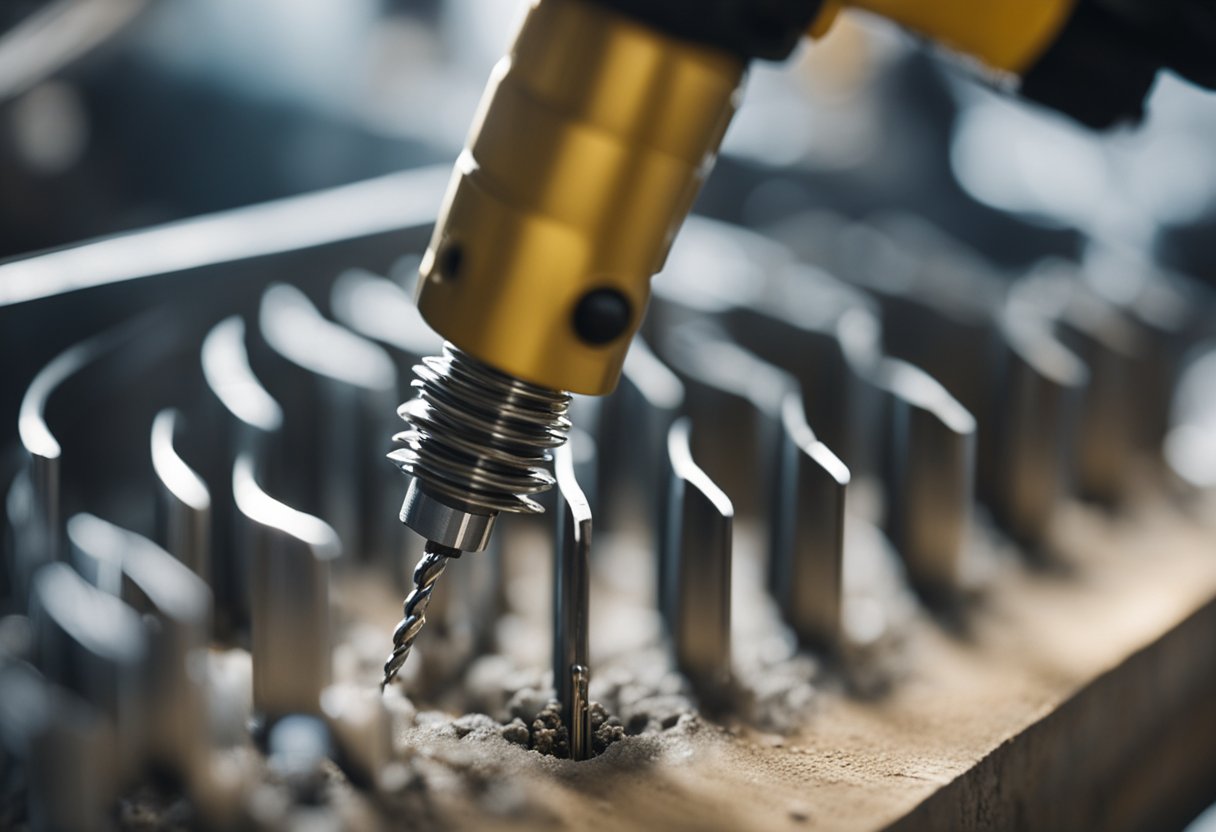As an electrician, I know that drilling holes for electrical wiring is a key part of any electrical installation. But choosing the right drill bit can be a challenge, especially with so many options available. In this article, I’ll discuss everything you need to know about drill bits for electrical wiring, from understanding the different types of bits to drilling techniques and safety measures.
When it comes to electrical wiring, choosing the right drill bit is crucial. The wrong bit can lead to damaged wires, uneven holes, and other problems that can compromise the safety and effectiveness of your electrical system. But with so many types of drill bits available, it can be difficult to know which one to use for your specific application. In this article, I’ll break down the different types of drill bits for electrical wiring and help you choose the right one for your needs.
Key Takeaways
- Understanding the different types of drill bits for electrical wiring is crucial for a safe and effective installation.
- Choosing the right drill bit depends on a variety of factors, including the type of material you’re drilling through and the size of the hole you need.
- Proper drilling techniques and safety measures are essential for protecting your electrical wiring and ensuring a successful installation.
Understanding Drill Bits for Electrical Wiring
https://www.youtube.com/watch?v=ZjzrQT-nSck&embed=true
As an electrician, I know that choosing the right drill bit for electrical wiring is crucial for a secure and efficient installation. In this section, I will cover the different types of drill bits commonly used for electrical wiring and their specific uses.
Standard Drill Bits
Standard drill bits are the most commonly used drill bits for electrical wiring. They come in various sizes, typically ranging from 1/16 inch to 1/2 inch in diameter. When drilling holes for electrical wiring, it is important to choose the appropriate drill bit size based on the size of the wire and the type of material being drilled.
Spade Bits
Spade bits are flat, paddle-shaped drill bits that are commonly used for drilling larger holes in wood. They are ideal for drilling holes for electrical boxes and conduit. Spade bits come in various sizes, typically ranging from 1/4 inch to 1 inch in diameter. When using spade bits for electrical wiring, it is important to choose the appropriate size based on the size of the hole needed for the wire.
Auger Bits
Auger bits are long, spiral-shaped drill bits that are commonly used for drilling deep holes in wood. They are ideal for drilling holes for electrical conduit in walls and ceilings. Auger bits come in various sizes, typically ranging from 1/4 inch to 1 inch in diameter. When using auger bits for electrical wiring, it is important to choose the appropriate size based on the size of the hole needed for the conduit.
Drill Bit Extension
Drill bit extensions are used to extend the reach of a drill bit. They are commonly used in electrical wiring to drill holes in hard-to-reach areas, such as behind walls and ceilings. Drill bit extensions come in various sizes and can be used with both standard and spade bits.
In summary, choosing the right drill bit for electrical wiring is essential for a secure and efficient installation. Standard drill bits, spade bits, and auger bits are the most commonly used drill bits for electrical wiring, and drill bit extensions are used to extend the reach of a drill bit. When choosing a drill bit, it is important to consider the size of the wire or conduit and the type of material being drilled.
Choosing the Right Drill Bit
https://www.youtube.com/watch?v=uII0G89fONs&embed=true
When it comes to drilling into wood, masonry, concrete, or plywood for electrical wiring, choosing the right drill bit is crucial. Using the wrong drill bit can result in damage to the material or the electrical wire. Here are some tips on how to choose the right drill bit for your electrical wiring project:
1. Determine the Material
Before selecting a drill bit, you need to determine the material you will be drilling into. If you are drilling into wood or plywood, a regular drill bit will suffice. However, if you are drilling into masonry or concrete, you will need a hammer drill bit to penetrate the hard surface.
2. Consider the Size of the Hole
The size of the hole you need to drill will depend on the size of the electrical wire you are running through it. The most commonly used drill bit sizes for electrical wiring are 1/2 inch, 3/4 inch, and 1 inch. When drilling a hole in studs for wiring, it is important to remember that the hole should be slightly larger than the drill bit size, as the wires will need room to fit through the hole.
3. Choose the Right Type of Bit
There are a variety of drill bits available for electrical wiring, including spade bits and auger bits. Spade bits have wide, flat tips that quickly remove a lot of material but are a bit less durable. Auger bits, on the other hand, have self-feeding tips and large, heavy-duty flutes that can handle a nail or two. When drilling into wood or plywood, spade bits are a good choice. For masonry or concrete, a hammer drill bit is necessary.
4. Use the Right Technique
Using the right technique when drilling for electrical wiring is just as important as choosing the right drill bit. When drilling into wood or plywood, make sure to hold the drill at a 90-degree angle to the surface. For masonry or concrete, use a hammer drill and apply steady pressure to the surface.
By following these tips, you can choose the right drill bit for your electrical wiring project and ensure a secure and efficient installation of electrical wires.
Drilling Techniques for Electrical Wiring
https://www.youtube.com/watch?v=JYycB8TcYOc&embed=true
When drilling holes for electrical wiring, it is important to use the correct technique to ensure the safety of the wiring and the structure. Here are some tips to help you drill holes for electrical wiring:
-
Mark the spot: Use a pencil to mark the spot on the wall where you want to drill the hole. This will help you drill the hole in the right place and avoid damaging the wall or the wiring.
-
Choose the right drill bit: The size of the drill bit you use will depend on the size of the wire you are running. For most electrical wiring, a 1 and 1/2 inch diameter hole is recommended. Use a drill bit that is designed for drilling into studs, and make sure it is long enough to reach the depth you need.
-
Drill straight: When drilling the hole, make sure to keep the drill bit straight. This will help you avoid damaging the wall or the wiring, and also ensure that the hole is the right size and shape.
-
Use a drill bit extension: If you need to drill a hole in a hard-to-reach spot, such as a corner or a tight space, use a drill bit extension. This will help you reach the spot and drill the hole without damaging the wall or the wiring.
-
Drill faster: To drill holes faster, use a drill with a higher RPM (revolutions per minute) rating. This will help you drill through the wall more quickly and efficiently.
-
Measure the depth: Before drilling the hole, measure the depth of the wall cavity with a ruler or measuring tape. This will help you make sure that the drill bit is long enough to reach the depth you need.
By following these tips, you can ensure that you drill holes for electrical wiring safely and efficiently. Remember to always take your time and use the correct technique to avoid damaging the wall or the wiring.
Safety Measures in Drilling
As an electrician, safety is a top priority when working with electrical wiring and drilling. Here are some safety considerations to keep in mind when drilling for electrical wiring:
Eye Protection
Eye protection is a must when drilling for electrical wiring. Even if you think you know where the wires are, accidents can happen. Flying debris from drilling can cause serious eye injuries. Therefore, I always wear safety glasses or goggles when drilling.
Turn Off Power
Before drilling, it is important to turn off the power to the area where you will be drilling. This will prevent any electrical shocks or fires. I always double-check to make sure the power is off before starting to drill.
Identify Wires
Identifying wires is crucial when drilling for electrical wiring. You don’t want to accidentally drill into a wire, causing damage or injury. I use a wire detector to locate wires before drilling. If I am unsure, I will consult with the building’s plans or hire a professional to help me identify the wires.
Use the Right Drill Bit
Using the right drill bit is important for safety and efficiency. The drill bit should be the correct size for the hole you need to drill. Using a drill bit that is too small can cause the drill to slip and cause damage. Using a drill bit that is too large can cause the hole to be too big, making it difficult to secure the wiring.
Secure the Area
Securing the area around where you will be drilling is important for safety. I make sure the area is clear of any debris or objects that could cause tripping or falling. I also make sure that anyone who doesn’t need to be in the area is out of the way.
By following these safety measures, you can ensure that drilling for electrical wiring is done safely and efficiently.
Drilling for Switch and Outlet Boxes
https://www.youtube.com/watch?v=z8mvCFYW9F0&embed=true
When it comes to drilling for switch and outlet boxes, it is important to choose the right size drill bit and hole size. The most commonly used drill bit sizes for electrical wiring are 1/2 inch, 3/4 inch, and 1 inch. However, the size of the hole you drill in studs for wiring should be slightly larger than the drill bit size, as the wires will need room to fit through the hole.
For switch and outlet boxes, the hole size will depend on the size of the box. A standard switch box is typically 2 inches by 3 inches, while a standard outlet box is typically 2 inches by 4 inches. To drill a hole for a standard switch box, a 1 1/2 inch hole saw can be used. For a standard outlet box, a 2 1/8 inch hole saw is typically used.
It is important to note that the size of the hole will also depend on the type of wall you are drilling into. When drilling into drywall, it is important to use a drywall saw or a jab saw to cut out the hole. This is because drywall is a soft material and can easily be cut with a saw.
When drilling into a stud, it is important to use a stud finder to locate the wood studs behind the wall. This will help you know where to drill. Once you have located the stud, mark the location of the hole with a pencil. Then, drill the hole using the appropriate size drill bit.
In conclusion, drilling for switch and outlet boxes requires the right size drill bit and hole size. The size of the hole will depend on the size of the box and the type of wall you are drilling into. By using the appropriate tools and techniques, you can ensure that your wiring is properly installed and safe for use.
Navigating Obstacles While Drilling
https://www.youtube.com/watch?v=EmBo7TC9ofw&embed=true
When drilling for electrical wiring, there are often obstacles that can make the process more challenging. These obstacles can include studs, joists, framing, corners, and nail plates. Navigating these obstacles requires careful planning and execution to ensure that the wiring is installed safely and securely.
One common obstacle that you may encounter when drilling for electrical wiring is a stud. Studs are vertical framing members that are typically spaced 16 inches or 24 inches apart. When drilling through a stud, it is important to avoid hitting any electrical wires or plumbing pipes that may be running through the stud. To avoid this, you should use a stud finder to locate the edges of the stud before drilling. Additionally, you should use a drill bit that is slightly larger than the electrical wire to ensure that the wire can pass through the hole without getting damaged.
Another obstacle that you may encounter when drilling for electrical wiring is a joist. Joists are horizontal framing members that support the floor or ceiling above. When drilling through a joist, it is important to avoid weakening the structural integrity of the joist. To avoid this, you should drill a hole that is no larger than one-third the depth of the joist. Additionally, you should use a nail plate to protect any electrical wires that may be running through the joist.
When drilling through framing, it is important to avoid hitting any electrical wires or plumbing pipes that may be running through the framing. To avoid this, you should use a stud finder to locate the edges of the framing before drilling. Additionally, you should use a drill bit that is slightly larger than the electrical wire to ensure that the wire can pass through the hole without getting damaged.
Finally, when drilling through corners, it is important to avoid hitting any electrical wires or plumbing pipes that may be running through the walls. To avoid this, you should use a drill bit that is long enough to reach the corner without hitting any obstacles. Additionally, you should use a flexible drill bit to navigate around any obstacles that may be present.
In summary, navigating obstacles while drilling for electrical wiring requires careful planning and execution to ensure that the wiring is installed safely and securely. By using the right tools and techniques, you can avoid damaging any electrical wires or plumbing pipes and ensure that the wiring is installed correctly.
Securing and Protecting Electrical Wiring
When it comes to electrical wiring projects, it is crucial to secure and protect the wiring to ensure safety and prevent damage. Here are some tips to help you secure and protect your electrical wiring:
Use the Right Type of Wire
Choosing the right type of wire is essential to ensure the safety and efficiency of your electrical wiring project. Make sure to select a wire that is suitable for the intended use and is rated for the appropriate voltage and amperage. Using the wrong type of wire can lead to overheating, short circuits, and other hazards.
Properly Route and Secure the Wiring
Once you have selected the right type of wire, it is important to properly route and secure it. The wiring should be routed in a way that minimizes the risk of damage or interference. Use cable staples or other appropriate fasteners to secure the wiring in place, making sure not to over-tighten or damage the wire.
Protect the Wiring with Conduit
In some cases, it may be necessary to protect the wiring with conduit. Conduit is a tube or pipe that is used to encase and protect electrical wiring. It can be made from a variety of materials, including PVC, metal, or flexible materials like corrugated plastic. Conduit can provide an extra layer of security and protection for your wiring, especially in areas where the wiring is exposed to the elements or other hazards.
Ensure Proper Circuit Protection
Finally, it is important to ensure that your electrical wiring project is properly protected by circuit protection devices, such as circuit breakers or fuses. These devices can help prevent overloading and short circuits, which can cause damage to your wiring and create a fire hazard.
By following these tips, you can help ensure the safety and efficiency of your electrical wiring project, and protect your home and family from potential hazards.
Conclusion
In summary, when drilling holes for electrical wiring, it is important to choose the right size drill bit to ensure a secure and efficient installation. The most commonly used drill bit sizes for electrical wiring are 1/2 inch, 3/4 inch, and 1 inch. However, it is important to remember that the hole should be slightly larger than the drill bit size, as the wires will need room to fit through the hole.
When drilling through studs, the most common drill bits used are auger bits and spade bits. Auger bits have self-feeding tips and large, heavy-duty flutes that can handle a nail or two. Spade bits have wide, flat tips that quickly remove a lot of material but are a bit less durable.
It is also important to consider the number of wires that will be running through the hole. Depending on the size of the drill bit, typically two to four 14/2 wires can fit in one hole. 14/2 and 12/2 NMD can be shared in the same hole, while 10/2 or 10/3 NMD usually require their own hole.
Having the appropriate drill bit size ensures a safe and efficient installation of electrical wires. Always wear eye and ear protection when drilling, and measure the depth of the wall cavity before drilling. By following these guidelines, you can ensure that your electrical wiring installation is done correctly and safely.
Frequently Asked Questions
What drill bit do electricians commonly use for running wire through studs?
Electricians commonly use 1/2 inch, 3/4 inch, and 1 inch drill bits for running wire through studs. It is important to choose the right size drill bit to avoid damaging the wire or creating a loose connection. Here is a more detailed article about what size hole should be drilled for electrical wiring.
What is the best drill bit for making electrical holes?
The best drill bit for making electrical holes depends on the material you are drilling into. For wood, a spade bit or auger bit works well. For metal, a step bit or twist bit is recommended. It is important to choose a high-quality drill bit that is sharp and made of durable materials. This article provides more information about choosing the right drill bit for running electrical wire.
What size hole should be drilled for Romex?
When drilling a hole for Romex, it is important to choose a drill bit that is slightly larger than the diameter of the cable. For example, a 1/2 inch drill bit should be used for 14/2 Romex cable, while a 3/4 inch drill bit should be used for 12/2 Romex cable. It is important to avoid drilling a hole that is too large, as this can lead to loose connections and potential safety hazards.
Can drilling into electrical wire be avoided?
Yes, drilling into electrical wire can be avoided by taking some precautions. Before drilling, it is important to familiarize yourself with the existing wiring in the area. You can use a stud finder or wire detector to locate wires behind walls. Additionally, you can use a flexible drill bit or a fish bit drill to help guide the drill bit around obstacles and avoid hitting wires. Here is a more detailed article about how to avoid drilling into electrical wires.
What are the benefits of using a flexible drill bit for electrical work?
Flexible drill bits are ideal for drilling through walls and ceilings, as they can bend and flex around obstacles. They are also useful for drilling in tight spaces and hard-to-reach areas. Additionally, flexible drill bits are less likely to damage existing wiring, as they can be guided around wires and other obstacles. This article provides more information about how to use a flexible drill bit for electrical work.
How does a fish bit drill help with running wires through walls?
A fish bit drill is a specialized tool that is used to help run wires through walls. The tool features a flexible shaft that can be inserted into a small hole in the wall. Once the shaft is in place, a drill bit can be attached to the end of the tool, allowing the user to drill a hole through the wall and run wires through the opening. Fish bit drills are especially useful for running wires through walls that have insulation or other obstacles.

Hi, I’m Sal Muller of Tooltrip.com. My DIY experience led me to understand essential power tools for home projects. Tooltrip.com guides enthusiasts and professionals in choosing right tools for any job. I provide concise top tool reviews for easier, efficient DIY.

